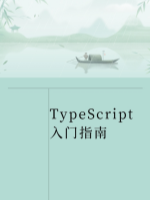42 | 组件封装
在TypeScript与React(或其他前端框架如Vue、Angular)结合开发的现代Web应用中,组件封装是一项至关重要的技术。它不仅提高了代码的可重用性、可维护性和可测试性,还促进了团队的协作与开发效率。本章将深入探讨TypeScript环境下组件封装的最佳实践,涵盖从基础概念到高级技巧的全面内容。
一、组件封装基础
1.1 组件的概念
组件是构建Web应用的基本单元,它封装了UI的一部分及其逻辑。在TypeScript中,当我们使用React这样的库时,组件可以是函数式组件(Functional Components)或类组件(Class Components),而TypeScript则通过类型注解为这些组件提供了静态类型检查的能力,从而增强了代码的安全性和可预测性。
1.2 为什么需要封装
- 复用性:封装后的组件可以在应用的多个地方重复使用,减少了重复编码。
- 维护性:当组件内部逻辑变更时,只需修改组件本身,无需在每个使用点上进行调整。
- 模块化:封装有助于实现高内聚低耦合的模块化设计,使得代码结构更加清晰。
- 测试性:独立的组件更容易进行单元测试,提高代码质量。
二、TypeScript中的组件封装实践
2.1 函数式组件的封装
在React 16.8引入Hooks后,函数式组件因其简洁性和易用性成为主流。TypeScript为函数式组件提供了强大的类型支持。
// 定义一个简单的函数式组件,使用Props进行类型注解interface ButtonProps {label: string;onClick?: () => void;}const Button: React.FC<ButtonProps> = ({ label, onClick }) => (<button onClick={onClick}>{label}</button>);// 使用Button组件<Button label="Click Me" onClick={() => console.log('Clicked!')} />
在上面的例子中,ButtonProps接口定义了组件的属性类型,而React.FC<ButtonProps>则是一个泛型类型,用于指定函数式组件的Props类型。
2.2 类组件的封装
尽管函数式组件越来越受欢迎,但在某些场景下(如需要状态、生命周期方法等),类组件仍然是必要的。
import React, { Component } from 'react';interface CounterProps {initialCount: number;}interface CounterState {count: number;}class Counter extends Component<CounterProps, CounterState> {constructor(props: CounterProps) {super(props);this.state = { count: props.initialCount };}increment = () => {this.setState(prevState => ({count: prevState.count + 1}));}render() {return (<div><p>Count: {this.state.count}</p><button onClick={this.increment}>Increment</button></div>);}}// 使用Counter组件<Counter initialCount={0} />
在这个例子中,Counter类组件通过props接收初始值,并在内部维护一个状态count。通过this.setState方法更新状态,触发重新渲染。
三、高级封装技巧
3.1 泛型组件
TypeScript的泛型不仅限于函数和类,还可以应用于React组件,使得组件能够接收任意类型的Props。
interface GenericProps<T> {data: T;renderItem: (item: T) => React.ReactNode;}const GenericList: React.FC<GenericProps<any>> = ({ data, renderItem }) => (<ul>{data.map((item, index) => (<li key={index}>{renderItem(item)}</li>))}</ul>);// 使用GenericList展示用户列表<GenericListdata={[{ name: 'Alice' }, { name: 'Bob' }]}renderItem={user => <span>{user.name}</span>}/>
3.2 高阶组件(HOC)
高阶组件是一个函数,它接收一个组件并返回一个新的组件。HOC在封装跨组件逻辑时非常有用。
interface WithLoadingProps {isLoading: boolean;}function withLoading<P>(WrappedComponent: React.ComponentType<P>) {return function WithLoadingComponent(props: P & WithLoadingProps) {if (props.isLoading) {return <div>Loading...</div>;}return <WrappedComponent {...(props as P)} />;};}// 使用withLoading封装Button组件const LoadingButton = withLoading(Button);// 使用LoadingButton<LoadingButton label="Click Me" isLoading={true} />
在这个例子中,withLoading是一个HOC,它接收任何组件并返回一个新的组件,该组件在isLoading为true时显示加载状态,否则显示原组件。
3.3 组件库与组件复用
随着项目规模的扩大,创建和维护一个内部组件库变得尤为重要。通过TypeScript和工具如Lerna、Yarn Workspaces等,可以方便地管理多个组件包之间的依赖关系,并在项目中复用这些组件。
四、最佳实践与注意事项
- 明确组件职责:确保每个组件只做一件事,并做好它。
- 使用Props和State分离关注点:Props用于从外部接收数据,State用于内部状态管理。
- 避免过度封装:过度的封装可能会导致组件难以理解和维护。
- 文档与类型注解:为组件提供清晰的文档和类型注解,帮助其他开发者理解和使用。
- 测试:编写单元测试,确保组件在各种情况下都能正常工作。
五、总结
组件封装是TypeScript与React等前端框架结合开发中不可或缺的一环。通过合理的封装,我们可以提高代码的可复用性、可维护性和可测试性,从而构建出更加健壮和高效的Web应用。在本章中,我们探讨了组件封装的基础概念、TypeScript中的实践技巧以及高级封装策略,希望这些内容能够帮助你更好地理解和应用组件封装技术。



